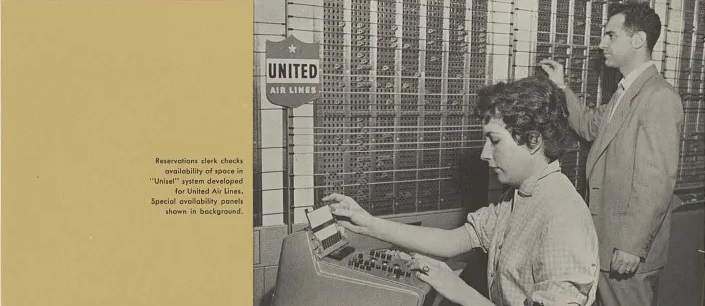Evelyn Berezin was a pioneer in the world of computing. She is considered the creator of the first word processor. But she also made several contributions. Today we will talk about another of them: United Airlines’ first automated reservation system: UNISEL.
While Evelyn Berezin was working at Teleregister, a company specializing in creating reservation systems, she designed the first automated airline reservation system for United Airlines. This was in 1962, achieving a response time of 1 second. It is said that, in eleven years, this system never stopped working.

However, it was not the development of this system that impressed me the most, but precisely its deployment to achieve high availability and reliability in its services.
The United Airlines reservation system had non-functional requirements, that it had to operate 24 hours a day, 7 days a week, which allowed the fault tolerance of the mainframe computers to last a few seconds at most.
We have to keep in mind that this is 1958, where one of the limitations is that you couldn’t use tubes, because downtime would be prohibitive, so they used semiconductors. A central machine failure for more than a few seconds could not be tolerated.
United Airlines Automated Reservation System Deployment
Evelyn then had to choose a location for a system that was to serve the entire United States. Berezin chose Denver. There, applications would arrive from about 60 terminals in various cities spread throughout the country.
The central computer system was built using three computers, with a load balancer that would be responsible for assigning requests based on the load of each machine. Because? At that time, they could not estimate how much the aviation industry would grow in the next ten years. For this reason, she had to be well prepared. If the system started deleting applications, both United Airlines and your company would be in big trouble and your career would likely be over.
But his idea of reliability didn’t stop there. Each terminal had a dedicated line for sending requests to the central system in Denver and a dedicated line for receiving responses. These two lines were duplicated in case either of them failed. Furthermore, if a terminal misbehaved, a switch would bypass it, ensuring that the connection going from there to other cities in the country was not interrupted.
What about shared storage on those three main computers? There were none. He implemented a fragmented architecture with drum storage (perhaps the first time in database systems?):
[…] each of the drums was divided into places where the specific information of the trip was stored.
So, in addition to being the first automated air reservation system, we can see that it promoted high availability techniques that are very relevant today.
Once again, Evelyn Berezin demonstrated her ability and versatility. She was visionary, taking into account several concepts and techniques that are so important today for the deployment of any system: reliability, high availability, load balancer, redundancy, horizontal scalability among others.
If you want to learn more about this amazing woman and her contributions, I recommend the article


